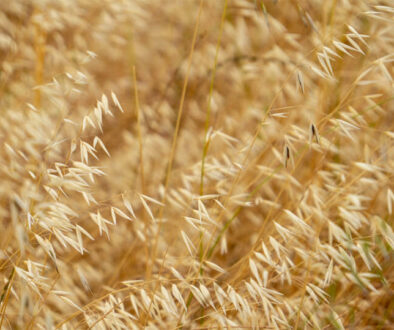August 2020 eNewsletter
Looking towards fall
By Jason Skotheim, SaskBarley Chair
I hope you are all having a good harvest season so far.
From all accounts, the barley crop in Saskatchewan this year looks good and Western Canada is poised to have a large grain crop overall.
At this point of year, it’s good to review best practices for drying and storing malting barley, especially as we know some areas had higher moisture this season. See the articles below for help with this, which includes information on how to dry and monitor your barley.
Last month, SaskBarley partnered with SaskCanola to host a booth and trial plots at the Ag in Motion 2020 show. Of course, when we originally planned this project we didn’t know it was going to be a virtual show. But in the end we found creative ways to connect with farmers virtually. For example, we created a video featuring farmer Katelyn Duncan and agronomist Dean Streisel discussing the benefits of including barley in your crop rotation in this video. Watch the video now.
As we head into the fall, we are busy planning events for barley farmers over the winter season. Of course, some of these will have to be adapted to the modern realities but we are trying to still deliver as much value as possible. Please stay tuned for announcements regarding CropSphere 2021, Grade School, Top Notch meetings and a Malt Academy this fall.
Stay safe and keep in touch.
Jason Skotheim
SaskBarley Chair
Drying and storing malt barley this fall
Originally published by the Canadian Malting Barley Technical Centre
Western Canada is poised to harvest a large grain crop with much of the prairies having received sufficient moisture this growing season that will lead to trend or above trend yields. As harvest begins, please review these considerations for ensuring malting barley has the highest chances of selection as malt.
Drying and storage your malting barley
With some areas of the Prairies experiencing higher than average precipitation this season, malting barley may come off with higher levels of moisture in some regions. As a result, an important consideration for farmers with malting barley will be drying and proper storage and monitoring to ensure quality does not deteriorate.
Generally speaking barley should be dried down to 13.5% moisture for storage or delivery into the system. If your barley has excess moisture levels (i.e. above 13.5%), it is at risk of heating, loss of germination and other issues such as mold and mildew during storage.
How to dry your malting barley
- If your moisture level is >13.5%, you should try to bring the grain moisture down.
- Do not store malt barley @ >14.5% moisture for prolonged periods of time. Fungi and bacteria grow more quickly on higher moisture grain.
- In some circumstances, moisture will need to be removed from barley using driers. The basic rule with malting barley is “low and slow” with air temperatures not exceeding 68C and grain temperatures not exceeding 42C.
- Do not aerate when foggy or raining as moisture will accumulate on the surface of the grain potentially causing spoilage organisms to proliferate
Monitoring your barley after storage
The industry standard for germination energy in malting barley is minimum 95%, and good storage conditions can help maintain malting barley vigour. Heating, mold and mildew can also lead to barley being rejected for selection as malt. Here are some tips to keep your barley in condition:
- Run your aeration fans on cold days to cool (and eventually freeze) your bins. Cool and dry grain has greatly improved shelf life.
- If air/heat is not possible in the bin to dry the grain, you may need to remove all or part of the grain from your bin to dry it, or at least cool it down, before putting it back in the bin.
- Check your bin tops for moisture migration. A small bit of tough barley can ultimately spoil the whole bin if not addressed.
- If you have concerns, you can submit a sample to your local malting barley buyer to check the germination level of your barley.
Glyphosate and malt barley
We asked Peter Watts from the Canadian Malting Barley Technical Centre for his advice on using glyphosate on barley crops this year. His main advice: don’t do it. Here’s why …




